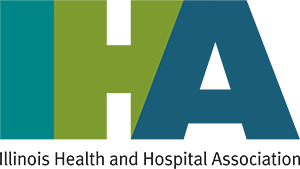HHS Eliminates X-Waiver Requirement for Eligible Practitioners
April 30, 2021
MEMORANDUM
On April 28, the U.S. Department of Health and Human Services (HHS) published Practice Guidelines for the Administration of Buprenorphine for Treating Opioid Use Disorder, exempting eligible physicians, physician assistants, nurse practitioners, clinical nurse specialists, certified registered nurse anesthetists and certified nurse midwives from certification requirements including training, counseling, and other ancillary services (i.e., psychosocial services) under the Controlled Substances Act (CSA) to treat up to 30 patients with buprenorphine.
Practitioners in a hospital have had flexibility to order buprenorphine for a patient in a hospital emergency department or inpatient unit before these guidelines were established under an exception to the registration requirement, known as the “three-day rule” (21 C.F.R. Part 1306.07(b)). The rule allows a practitioner who does not have an X-waiver to administer (but not prescribe) narcotic drugs to a patient for the purpose of relieving acute withdrawal symptoms while arranging for the patient’s referral for treatment. However, the “three-day rule” is limited so that only one day’s treatment may be given to a patient at one time and treatment must be limited to three days.
Under the new guidance, before dispensing or prescribing buprenorphine in an outpatient environment or outside of the “three-day rule”, practitioners must still obtain a waiver under the CSA by submitting a Notice of Intent to the Substance Abuse and Mental Health Services Administration (SAMHSA). Eligible practitioners must be licensed under state law and possess a valid Drug Enforcement Administration registration. The exemption applies only to the prescription of Schedule III, IV, and V drugs or combinations of such drugs, covered under the CSA, such as buprenorphine. The exemption does not apply to Schedule II medications, such as methadone.
Practitioners who do not wish to practice under the exemption and its 30 patient limit may seek a waiver per established protocols, although time spent practicing under the exemption will not qualify a professional for a higher patient limit. Practitioners who wish to increase their 30 patient limit after the first year must also upload their training certificate after completing the waiver form to show that they have completed the required training to prescribe and dispense buprenorphine.
When state law requires non-physician practitioners to be supervised by, or work in collaboration with, a physician these practitioners would be required to work with a DEA-registered physician when prescribing medications under this exemption. Practitioners who are employees or contractors of a U.S. department or agency acting within the scope of such employment or contract are exempt from this requirement.
On Jan. 14, the Trump administration had announced it would remove the X-waiver requirement for DEA-licensed physicians only, but those plans were halted by the incoming Biden administration on Jan. 27, citing that the announcement had been made prematurely. For more information, see IHA’s memos on the initial exemption and the reversal.
For additional background on the new exemption for eligible practitioners, see the HHS press release, Quick Start Guide for healthcare professionals, Frequently Asked Questions, and SAMHSA guidance on becoming a buprenorphine-waivered practitioner. For IHA questions or comments, please contact IHA.

